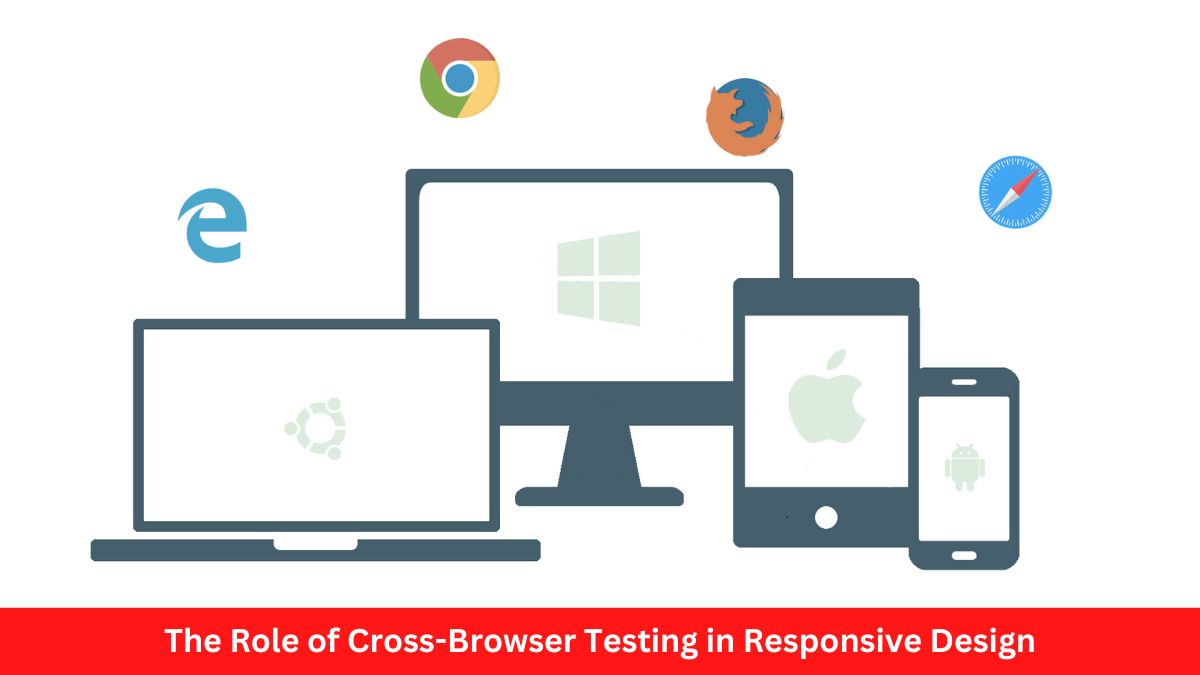From smartphones to laptops and everything in between, the technology we use in our day-to-day lives has become an integral part of our lives. We need technology to access information, communicate, and shop, leading to the proliferation of different types of devices.
These devices vary not only in their technology but also in their screen sizes. As a result, providing a seamless user experience across all devices has become a challenging task for businesses.
To overcome this issue, businesses prioritize responsive design, which provides a seamless experience and boosts conversions. Cross-browser testing is a must for a truly responsive website or application design.
It is the best way for businesses to ensure their website or application works perfectly across all devices and browsers. Several online mobile and web app testing tools are also available to increase working efficiency. Let’s dive deeper to find out how cross-browser testing and responsive design are interrelated.
What is responsive design?
Responsive design is a strategy that enables websites or applications to adapt to the screen size of the device on which they are being viewed. It uses flexible layouts, images, and CSS media queries to ensure the design appears and works well on any screen size.
The term “responsive design” was first coined by Ethan Marcotte in 2010 in an article emphasizing the need for a new type of web design that automatically adjusts itself according to the screen size. He said the conventional method of developing website designs for various devices was unsustainable and that a more flexible strategy is required to suit the expanding number of devices with diverse screen sizes.
But today, responsive design is not just about the adjustable screen. It has emerged as a new concept of website design where cross-browser web testing acts as a catalyst.
Top challenges in Responsive designing
Responsive design is a popular website and mobile web app development approach that allows content to adapt to different screen sizes and orientations. However, designing responsive websites and mobile web apps comes with its own set of challenges. We’ll explore some of the top challenges in responsive design and how to overcome them.
Challenge 1: Navigation Issues
One of the most common challenges in responsive design is related to navigation menus. Navigation menus are critical to any website design as they guide users to the information they need. However, designing navigation menus that work well across different screen sizes can be difficult.
Solution
Cross-browser testing is an effective way to identify and resolve navigation menu issues. By testing the website or app on different devices and browsers, using online app testing tools, designers can ensure that navigation menus scale well and provide a seamless user experience.
Challenge 2: Desktop View vs. Mobile View
Another challenge in responsive design is ensuring that the layout and style of the website or app is optimized for both desktop and mobile devices. This can be difficult as desktop and mobile devices have different screen sizes, resolutions, and aspect ratios.
Solution
Cross-browser web testing ensures the website or app appears consistent across different devices and browsers. This includes testing the layout and style of the website or app to ensure that it looks and functions well on both desktop and mobile devices.
Challenge 3: Slow Loading
Slow loading can be a major issue for responsive websites and mobile web apps. This is because responsive websites and mobile web apps often include large images, videos, and other media that can slow down page loading times.
Solution
Several ways to improve website speed include compressing images, reducing HTTP requests, speeding up server response times, and optimizing CSS and JavaScript. Online mobile and web app testing tools can also help identify and resolve slow-loading issues.
Challenge 4: Browser Compatibility
Browser compatibility is another significant challenge in responsive design. Websites and mobile web apps must work consistently across browsers and devices to provide a seamless user experience.
While developing a responsive website, it is crucial to ensure that it performs consistently across platforms and that its functionality does not alter when viewed on various browsers.
Solution
Cross-browser testing is crucial for identifying and resolving browser compatibility issues. By testing the website or app on different browsers and devices, designers can ensure it works well on all platforms.
Challenge 5: Pixelated Image
Finally, pixelated images can be a problem in responsive design. Images lose clarity when scaled up or down on different screen sizes. This is a prevalent problem resulting in poor user experience. A pixelated image not only loses its objective but also makes the website design look unprofessional.
Solution
This issue can be eliminated using various responsive image techniques, such as high-resolution images, optimizing images for different screen sizes through cross-browser web testing, and lazy loading images. All these methods improve the image quality and make any device look more sharp and clear.
Conclusion
In today’s digital world, responsive design is crucial in creating a seamless user experience across devices and screen sizes. Businesses that invest in responsive design can improve user engagement, conversions, and customer loyalty.
Several online app testing tools can help businesses test their websites on multiple devices and browsers. PCloudy can help businesses to ensure a successful, responsive design through cross-browser testing. It has a team of experienced professionals with a strong understanding of business challenges.
